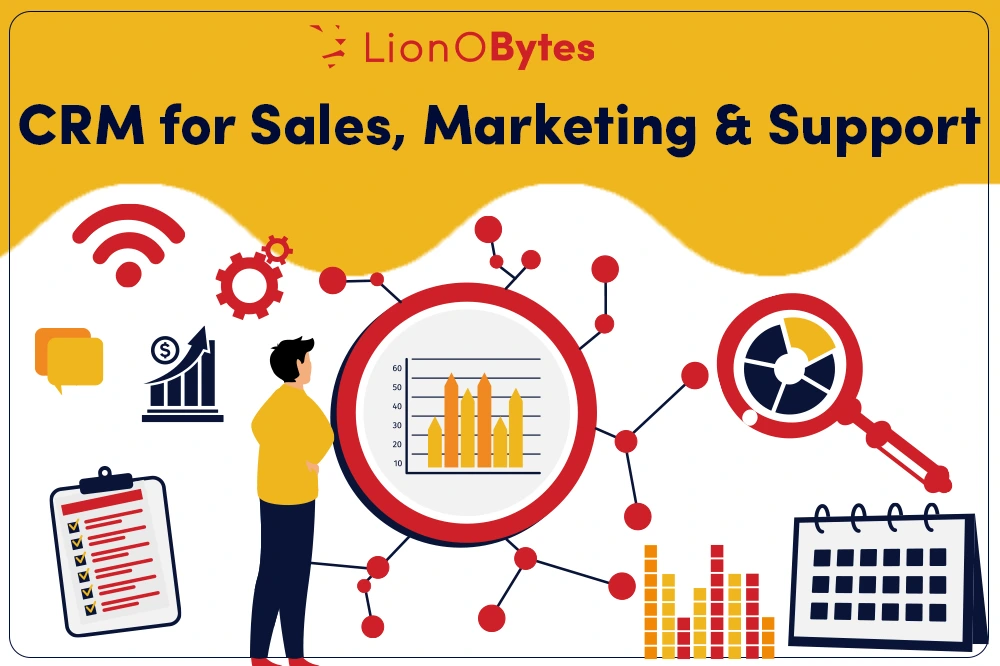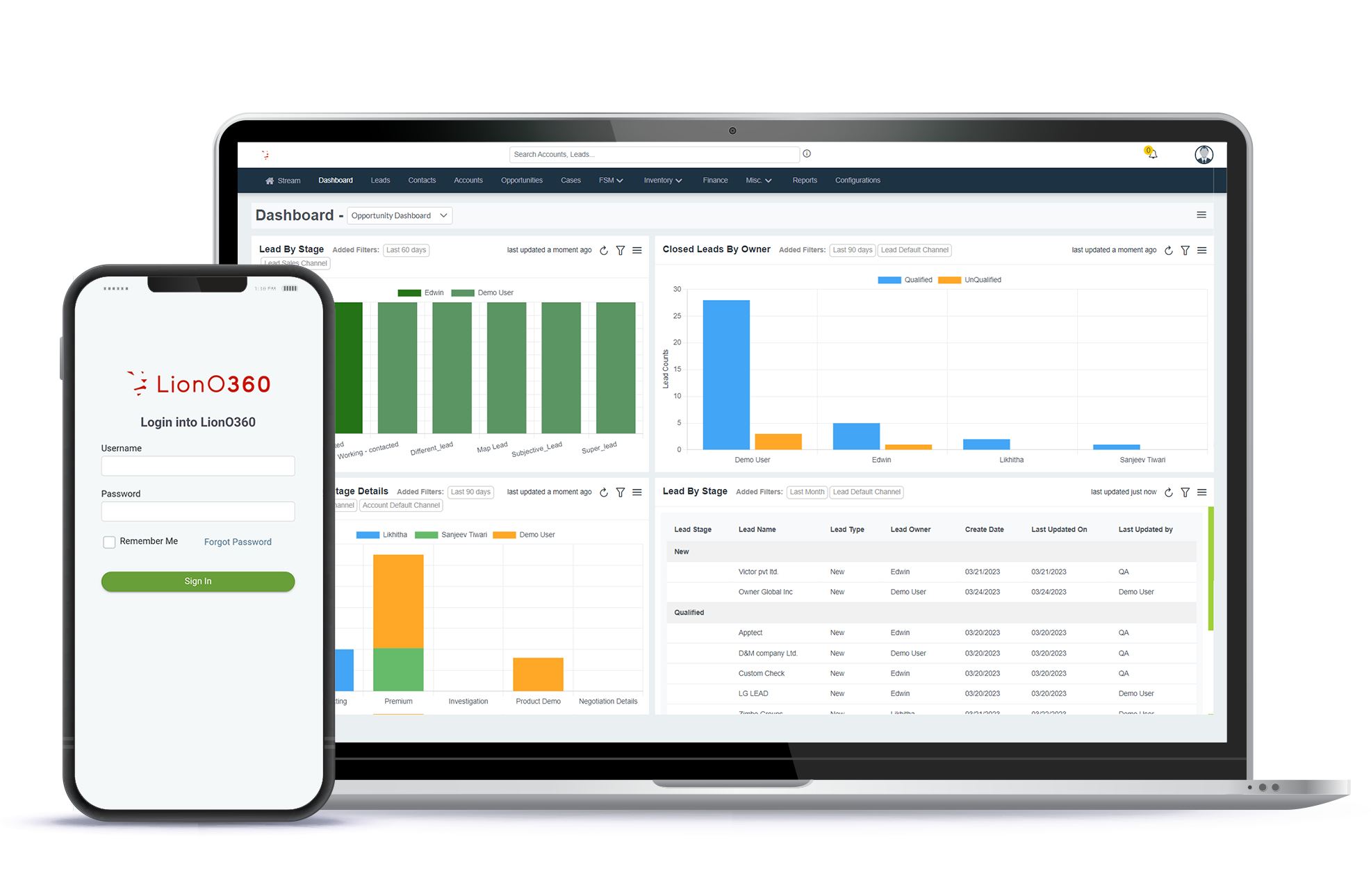
If not carefully considered and managed, the divide between sales, marketing, and customer support can be detrimental to growth. Typically, each of these departments has its own objectives, tools, and measures of success.
When departments fail to align, growth stagnates, customer experience diminishes, and opportunities are lost.
By utilizing Customer Relationship Management (CRM) software, organizations can disrupt these silos and provide departments with access to information sharing and data-driven insights, thereby increasing departmental engagement and facilitating the attainment of a common goal.
Below are some of the keyways CRM software can align sales, marketing, and customer support to promote business growth.
1. Breaking Down Departmental Silos
One of the biggest challenges for businesses is the disconnect between sales, marketing, and support. Marketing may run campaigns without sales feedback. Sales may complain about poor-quality leads. Support may not share customer pain points with either team.
CRM software solves this by centralizing customer data in a single platform. Everyone sees the same information, like lead sources, engagement history, past purchases, complaints, and feedback. This transparency reduces friction, prevents miscommunication, and keeps teams working with the same facts.
For example, if a lead downloads a whitepaper, marketing notes the interest. When sales reach out, they already know the prospect’s needs. Later, if the customer raises a support ticket, the support team can access the full interaction history to provide better service.
2. Enhancing Interdepartmental Communication
A CRM system makes a workspace where sales, marketing, and support can easily cooperate. Marketing campaigns can be tracked alongside sales outreach, while customer feedback collected by support feeds back into new campaigns.
Each department uses separate tools. Instead, CRM system will integrate emails, SMS, chat, and even social media into one.
3. Centralized Data for Innovative Decisions
With CRM software, customer data lives in one place. A sales rep can view a prospect’s last website visit, the emails they opened, and the support issues they raised. This view helps in three key ways below:
- Marketing can refine targeting and messaging based on real customer behavior.
- Sales can prioritize leads more effectively, focusing on those most likely to convert.
- Support can personalize interactions, knowing the customer’s full history.
4. Lead Scoring and Management
Lead scoring is one of the key components of customer lead management systems. These lead rankings consider a sales prospect's engagement, demographic information, and their behavior to allow sales team members to focus on the prospects that demonstrate a greater potential to convert into a sale.
A simple example of lead scoring in progress is a person who requests a demo and visits the pricing page, scoring higher than someone who has only downloaded a free eBook.
5. Turning Leads into Opportunities
CRM systems help transform leads into opportunities by segmenting them based on industry, job role, or buying intent. This allows businesses to:
- Deliver personalized marketing messages.
- Identify the most effective communication channels.
- Identify promising leads that exhibit strong buying signals.
When marketing automation integrates with CRM, the nurturing process becomes seamless. Automated emails, reminders, and follow-ups keep leads engaged until they're ready for sales outreach.
6. Improving Lead Quality and Deal Size
CRMs don’t just increase the number of leads—they improve lead quality. By analyzing customer data and buying patterns, marketing can better target campaigns, while sales get more relevant prospects.
With deeper insights into company size, budgets, and goals, sales teams can tailor their pitches to upsell or cross-sell, increasing deal size. Instead of treating every lead equally, CRM enables smarter prioritization and strategy.
7. Customer Feedback Loop
Support teams are on the frontlines of customer experience, but their insights often stay locked in-service logs. CRM software ensures this valuable feedback flows back to sales and marketing.
- Sales learns about common objections or concerns raised during onboarding.
- Marketing gets input on customer pain points to refine messaging.
- Support can track recurring issues and help product teams improve offerings.
Better Customer Insights for Retention
Acquiring a new customer is far more expensive than retaining an existing one. CRM systems provide deep insights into customer behavior, preferences, and interactions. Businesses can use this to:
- Identify upsell and cross-sell opportunities.
- Personalize support and offers.
- Send loyalty campaigns to long-term customers.
By aligning departments around retention goals, businesses ensure growth doesn’t just come from new customers but also from existing ones.
9. Avoiding Duplicated Efforts
Without a shared system, sales and marketing often overlap. A lead might get multiple emails from different reps, or support may respond to an issue already addressed. This not only wastes resources but also frustrates customers.
CRM prevents duplication by clearly showing where each prospect or customer is in their journey. Teams can see the full history and avoid redundant outreach, delivering a smoother, more professional experience.
10. Driving Growth Through Alignment
Ultimately, CRM software is not just about managing contacts. It’s about aligning teams around the customer journey. When marketing delivers high-quality leads, sales convert them efficiently, and support keeps them happy, businesses grow faster.
Some of the direct benefits include:
- Higher sales efficiency through better lead prioritization.
- Stronger marketing ROI thanks to targeted campaigns.
- Improved customer loyalty through personalized support.
- More revenue opportunities via upselling and cross-selling.
Lead the Way with LionO360 CRM

Lead is the target. LionO360 CRM helps businesses transform how they capture, manage, and convert leads. Its powerful Lead Management system streamlines your sales pipeline, ensuring no opportunity slips away.
With customizable stages and automated lead distribution, teams can align the sales process with their unique workflow. The built-in AI lead scoring and customer grading highlight high-value prospects, allowing sales reps to focus on the most promising opportunities.
LionO360 also offers real-time dashboards, tracking, and audit reports so you know exactly where each lead stands and what actions drive progress. Automated reminders, follow-ups, and even business card scanning reduce manual tasks, boosting productivity and accuracy.
By combining intelligence with automation, LionO360 empowers your team to act faster, work smarter, and close more deals. With this CRM, you’re not just managing leads, but you’re also leading the way to growth and stronger customer relationships. Get your free demo now!
Frequently Asked Questions
How can CRM software align sales, marketing, and support?
By centralizing customer data and enabling seamless information sharing, it promotes collaboration and empowers teams with valuable insights, ultimately enriching the customer experience and fostering business growth.
How does CRM software help in reducing miscommunication?
CRM consolidates all relevant customer information into a single platform accessible to all departments. This transparency ensures everyone works with the same facts, reducing misunderstandings and miscommunication.
In what ways can CRM improve interdepartmental communication?
CRM integrates email, SMS, chat, and social media into one platform. It also allows tracking of marketing campaigns alongside sales efforts and feedback from support teams, fostering better cooperation.
Can LionO360 CRM software enhance the quality of customer interactions?
Yes. By providing access to comprehensive interaction histories across departments, LionO360 CRM enables personalized service and timely responses, thereby improving overall customer satisfaction.













